Experts for Experts: How Matterport Streamlines BIM Creation and As-Built Documentation
The Role of BIM in Modern Construction
Building Information Modeling (BIM) has transformed the architecture, engineering, and construction (AEC) industry by enabling more efficient design, planning, and execution of projects. By creating intelligent 3D models that incorporate spatial relationships, material properties, and cost estimations, BIM helps teams collaborate effectively and minimize errors before construction begins.
Despite its benefits, creating accurate BIM models from existing structures has traditionally been a time-intensive process. Converting as-built conditions into digital formats often requires extensive site visits, manual measurements, and point cloud processing. Matterport is changing this paradigm by offering a faster, more efficient way to generate BIM-ready files.
The Growth and Adoption of BIM in AEC
The adoption of BIM has increased significantly over the past decade. According to a 2021 Dodge Data & Analytics report, nearly 75% of contractors use BIM for at least some portion of their work. The benefits of BIM adoption include:
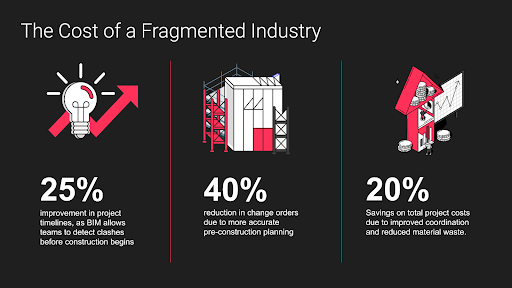
A separate Allied Market Research study estimates the global BIM market will grow from $14 billion in 2020 to over $50 billion by 2027, highlighting the increasing demand for digital construction technologies.
One of the biggest challenges remains the conversion of existing buildings into BIM models. Traditionally this process required expensive laser scanning and point cloud conversions, this is where Matterport offers a major advantage.
How Matterport Accelerates BIM Creation
Matterport’s reality capture technology enables AEC professionals to quickly digitize real-world spaces into high-fidelity 3D models. AEC professionals can use the Scan-to-BIM workflow to create BIM files compatible with Autodesk Revit and other design platforms, significantly reducing the time required to generate accurate as-built documentation.
Key Advantages of Matterport’s Scan-to-BIM Workflow
Faster Capture of As-Built Conditions: Matterport’s 3D scanning technology creates precise digital twins much faster at 20 second per scan compared to traditional LiDAR scanners.
Seamless Integration with Autodesk Revit: The free Matterport Plug-In for Revit simplifies importing scans directly into Autodesk Revit.
Automated Model Generation: Matterport provides LOD 200, BIM-ready files in IFC or RVT formats, reducing manual work.
Improved Collaboration and Accessibility: Digital twins captured with Matterport can be shared with stakeholders via the cloud.
Reduced Errors and Rework: High-accuracy scanning minimizes discrepancies between physical sites and digital models, reducing costly revisions.
Real-World Case Studies: Matterport in Action
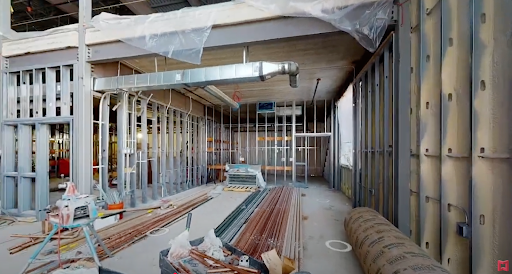
Knutson Construction: Streamlining As-Built Documentation Knutson Construction used Matterport to create digital twins of healthcare and commercial projects, reducing site visits by 50% and minimizing rework.
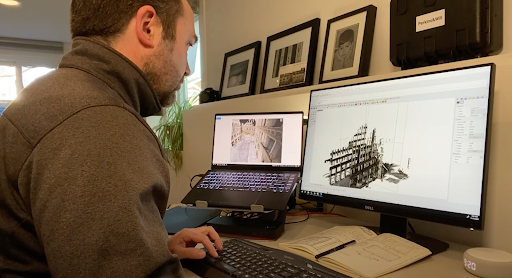
Perkins&Will: Enhancing Design Coordination Perkins&Will integrated Matterport to improve design validation, using digital twins for remote coordination, resulting in 30% faster project approvals.
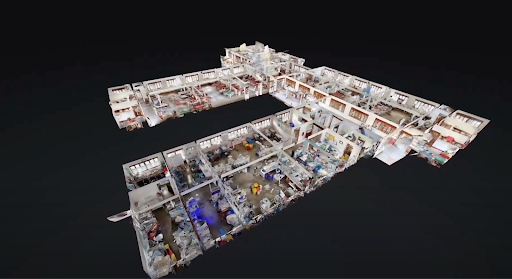
Build Health International: Accelerating Hospital Construction Build Health International leveraged Matterport for hospital projects in Africa and the Caribbean, reducing design errors by 40%.
The Scan-to-BIM Process with Matterport
Capture the Site with a Matterport 3D Camera
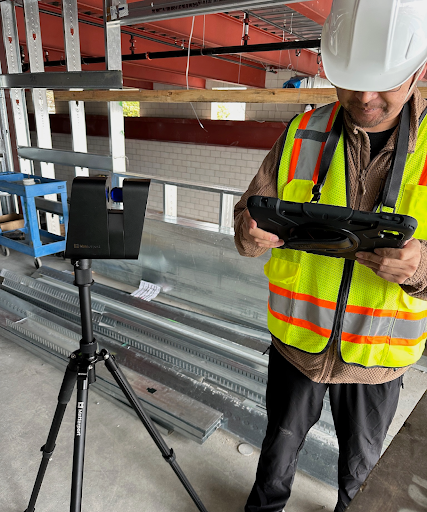
Capturing existing site conditions has traditionally been time-consuming, error-prone, and labor-intensive. Manual measurements can be inaccurate, leading to costly rework, while traditional laser scanning requires specialized expertise and expensive equipment. Multiple site visits are often necessary to collect missing data, delaying project timelines and increasing costs.
Matterport eliminates these challenges by enabling users to quickly and accurately scan a site using a Matterport Pro3. The process is significantly faster, easier, and more cost-effective than traditional survey methods, requiring minimal training.
Generate the Digital Twin
Once the site is captured, AEC professionals often struggle with assembling fragmented data. Traditional methods require extensive manual stitching of point cloud files, a process that is both time-consuming and technically complex. Misalignment in scans or missing sections can cause critical gaps in as-built documentation.
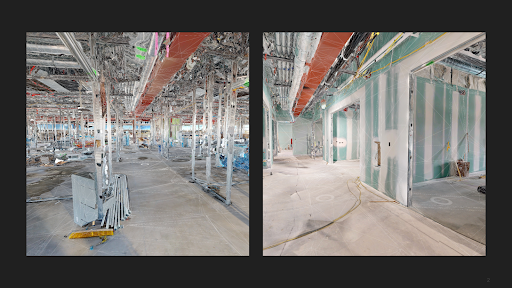
Matterport removes these inefficiencies by automatically processing scans in Matterport platform, where they are seamlessly stitched together to form a highly accurate, cohesive digital twin. With over 14 million spaces and 50 billion square feet digitized across 177 countries, Matterport has built the world’s largest and most precise spatial data library, empowering architects, engineers, construction professionals, and owner/operators with powerful insights and visualization tools. Users can easily navigate the digital twin using Matterport Showcase, improving team collaboration and reducing costly site visits.
Convert to BIM-Ready Files
One of the biggest hurdles in BIM adoption is converting raw scan data into usable models. Traditional methods rely on processing large point clouds, requiring extensive manual tracing and cleanup. This process is labor-intensive, prone to human error, and often leads to inconsistencies that cause design clashes.
Matterport’s Scan-to-BIM service eliminates these challenges by automatically converting 3D scans into IFC, RVT, or DWG files, making them directly usable in Autodesk Revit and other BIM software. With this automation, firms can cut processing times by weeks and ensure accurate BIM data from the outset.
Import into Autodesk Revit / AutoCAD and Begin Design Work
AEC professionals struggle to ensure that as-built data is accurate, complete, and seamlessly integrated into their workflows. Traditional point cloud processing can be slow and require significant manual adjustments, leading to delays and increased costs.
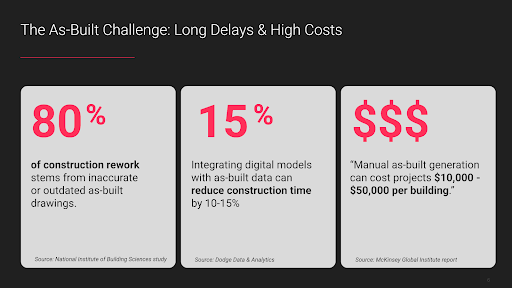
Matterport alleviates these pain points with the free Matterport Plug-In for Revit, enabling teams to import BIM-ready files directly into Revit. This automation results in faster project approvals, reduced modeling errors, and more efficient collaboration.
The Value of BIM in Large-Scale Projects
Construction Progress Monitoring
Traditional site monitoring relies on manual inspections and outdated blueprints, leading to budget overruns and schedule delays. Matterport provides real-time, detailed site views, allowing teams to track progress, compare conditions against BIM models, and identify deviations early.
Heritage Preservation and Historical Documentation
Capturing precise as-built conditions for aging buildings is disruptive and time-consuming. Matterport eliminates these challenges by creating highly detailed digital twins, allowing architects to analyze structures remotely, plan restorations accurately, and ensure compliance with preservation standards.
Disaster Recovery and Insurance Documentation
Following disasters, Insurance & Restoration professionals struggle to document damage quickly and accurately. Matterport enables users to capture precise 3D models of damaged sites, providing an indisputable record for insurance claims and reconstruction planning.
Smart Cities and Urban Planning
City planners face challenges in managing infrastructure and development with outdated data. With Matterport data, urban planners can start with real-world conditions rather than relying solely on 2D maps or legacy data. They scan the existing neighborhoods to understand building proximity, pedestrian access, and street conditions. Matterport provides data-rich digital twins and accessible BIM files that help optimize existing building use and stakeholder communication.
Real-World Impact and Industry Adoption
AEC firms are increasingly leveraging Matterport to improve project efficiency. According to Engineering.com, integrating Matterport with Revit has streamlined workflows.
A 2022 McKinsey & Company survey found that reality capture in BIM workflows resulted in:
50% faster project initiation times.
35% fewer change orders.
Higher ROI on BIM investments due to improved facility management.
Additionally, Deloitte suggests reality capture will play a key role in digital construction transformation, especially for sustainability and lifecycle management.
The Future of BIM with Matterport
Matterport’s ability to deliver fast, scalable, and accurate as-built documentation positions it as a critical tool for modern AEC workflows. By integrating with Autodesk Revit and other BIM platforms, Matterport accelerates project timelines and improves design accuracy.
Interested in learning how Matterport can support your workflows?
Talk to an Expert
